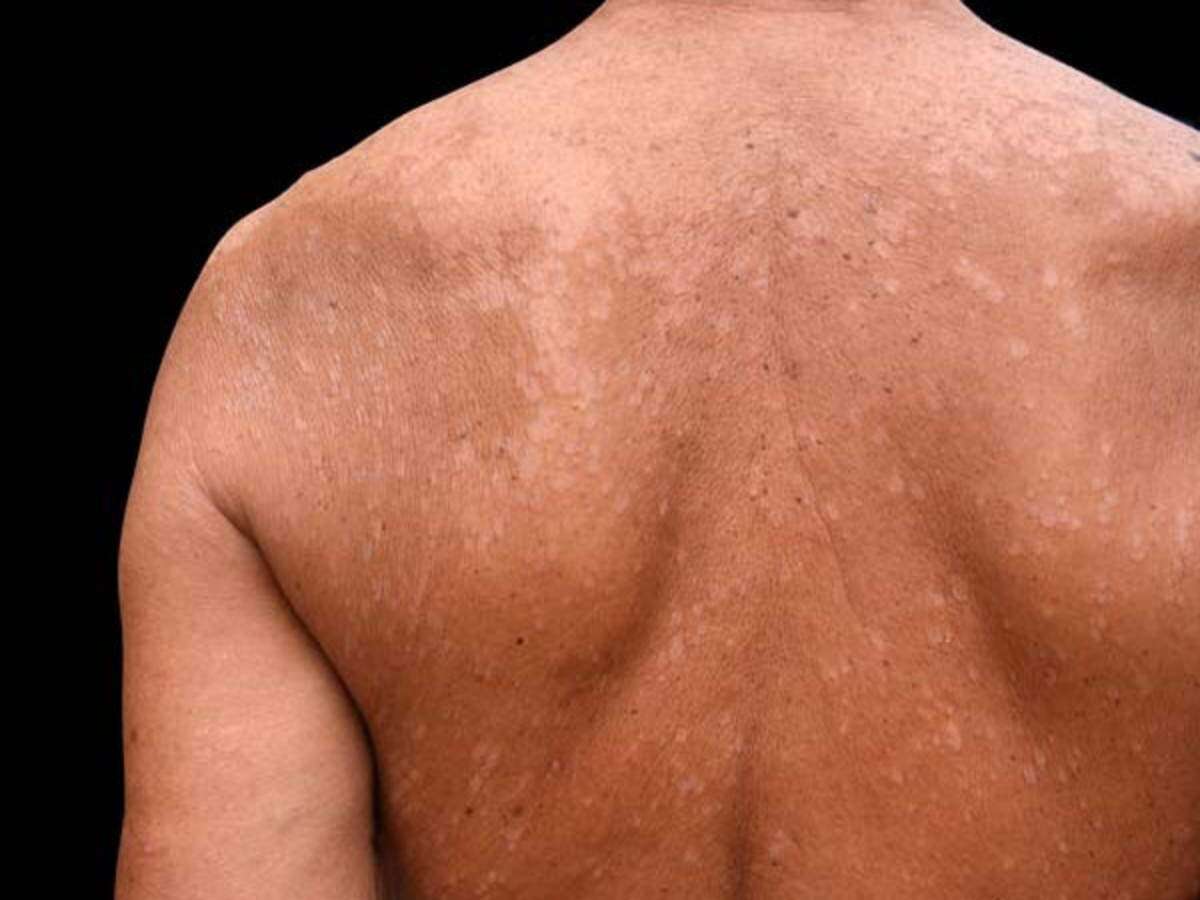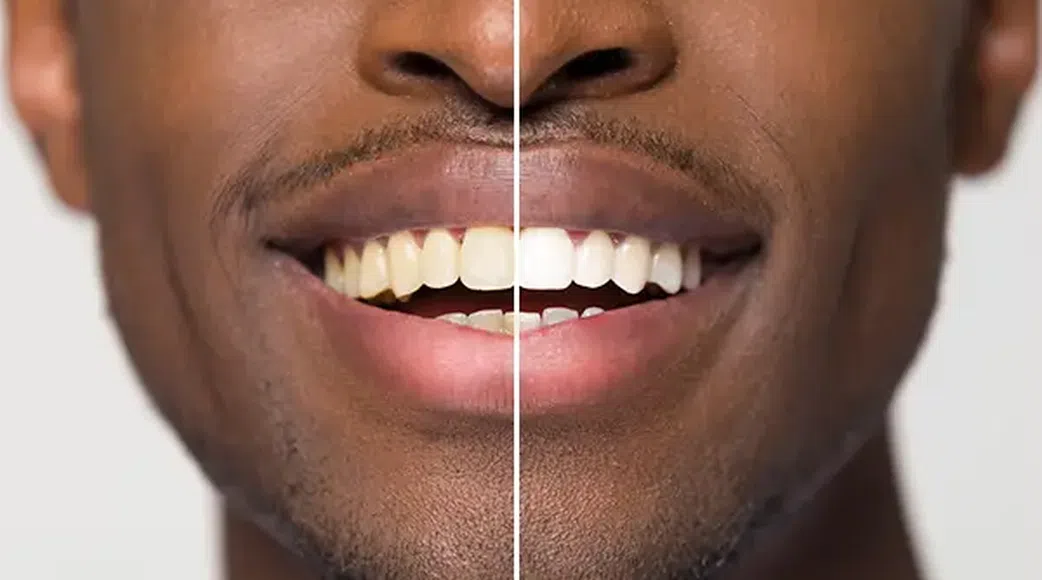One hot afternoon, a friend and I were making our way from the University of Lagos using the means of transport common to all semi-broke ‘freshers’ – the campus shuttle. The sun shone like its purpose was to punish rather than illuminate, and the air stood excruciatingly still.
It was on this day and on that bus that I felt a timid tap on my shoulder. An even more timid whisper followed the tap, “Sorry dear, please help me tell your sister that she has ringworm on her back.” Suddenly, the heat I felt was not from the sun, but from blood rising to my cheeks on her behalf.
When we got home, we promptly investigated the claim. There was no red skin, no prominent ring-shaped rash. All we saw was a small patch of skin about two shades lighter than her skin tone.
She didn’t have ringworm or eczema. She had tinea versicolor.
WHAT IS TINEA VERSICOLOR?
Tinea versicolor or pityriasis versicolor is a common fungal infection that affects over 100,000 people in Nigeria each year.
It is caused by the fungus Malassezia which is found on the surface of our skin. This normally helpful symbiote can sometimes spiral out of control like a houseguest that not only overstays his welcome but invites his family to take over your home.
When this happens, you develop patches of skin that may be lighter or darker than the surrounding skin.
Tinea versicolor is not contagious, and you can not contract it by sharing towels or clothes.
WHAT CAUSES TINEA VERSICOLOR?
Several factors that can trigger the fungal hostile takeover include:
- sun exposure
- hot weather
- excessive sweating
- oily skin
- hormonal changes
WHAT ARE THE SYMPTOMS OF TINEA VERSICOLOR
As stated at the outset, tinea versicolor is often misdiagnosed (mostly by people who are neither trained nor qualified to diagnose anything) and mistaken for other skin conditions such as eczema, ringworm, and vitiligo.
The most visible sign of tinea versicolor is discolored patches of skin, which commonly appear on the arms, chest, neck, or back. These patches could be:
- darker (hyperpigmentation) or lighter (hypopigmentation) than the surrounding skin
- a shade of pink, red, tan, or brown
- scaly, dry, and itching
In cooler, less humid temperatures, they are more likely to vanish.
HOW IS TINEA VERSICOLOR TREATED?
Tinea versicolor is a fungal infection. Therefore, wolfing down antibiotics and using antibacterial creams to treat it will only destroy your gut flora and damage your skin barrier.
Basically, you will continue to have itchy patches of skin but in addition to that, you won’t be able to pass out faeces because you’d have destroyed the bacteria in your digestive tract.
Antifungal creams or shampoos purchased over-the-counter (OTC) may be beneficial to treat the infection.
They include:
- clotrimazole
- miconazole
- selenium sulfide
- terbinafine
If you seek medical help for tinea versicolor, your doctor may prescribe topical creams that you can apply directly to your skin.
Examples are:
- ketoconazole
- ciclopirox
Your doctor may also prescribe the following oral medications:
- fluconazole
- itraconazole
- ketoconazole
Sadly, even after you treat the infection, your skin may stay discolored for several weeks or months. When the weather gets warmer and more humid, your infection may recur.
If your condition returns, your doctor may prescribe medication once or twice per month to prevent symptoms.
THE DIFFERENCE BETWEEN TINEA VERSICOLOR, ECZEMA, AND RINGWORM
It is important to know the difference between these infections, as they each require different courses of treatment.
ECZEMA

Eczema is the name erroneously given to practically any rash that occurs in our environment. One of the common eczemas is nummular eczema or discoid eczema. It is a skin disorder in which people gain coin-shaped or oval red or brown patches on their skin.
Other symptoms of nummular eczema may include:
- dry skin
- burning and itching of the skin, which is usually worse at night
- open spots that may crust over
If the spots become open, they are vulnerable to bacterial infection. Infected nummular eczema can cause:
- redness
- swelling
- foul-smelling discharge
- fever
Doctors do not know exactly what causes nummular eczema, and it has no remedy at the moment. The goal of treatment for this ailment is to cure the afflicted skin and prevent symptom flare-ups.
Doctors will recommend a treatment plan based on the patient’s age, symptoms, and current health status.
Eczema can fade away over time for some people. Others have it for the rest of their lives.
RINGWORM

Tinea corporis, also known as ringworm, is a skin ailment that resembles nummular eczema. Despite the name, fungus, rather than a worm, causes this infection.
It creates ring-shaped patches of skin on the arms and legs, but it can appear anywhere on the body, including:
- the soles of the feet (tinea pedis or athlete’s foot)
- the scalp (tinea capitis)
- the groin area (jock itch)
Symptoms include:
- round, flat patches of red, pink, brown, or gray skin that may be lighter or clear in the middle, giving them the appearance of ring-shaped patches that grow slowly and may spread to other parts of the body
- Itching
Antifungal creams, ointments, pills, and shampoos can treat ringworm. Many of these drugs are available without a prescription (OTC).
Before the fungus will go away, you will need to apply these treatments to your skin for 2 to 4 weeks. If the ringworm rash does not clear up within this time, consult a doctor. A doctor or dermatologist might prescribe stronger antifungal drugs to treat the problem.
It can be fascinating (or disgusting) to know that our skin plays host to millions of microorganisms, including fungi. But as long as you set the proper hygiene limits, you and your microscopic inhabitants will be just fine.























